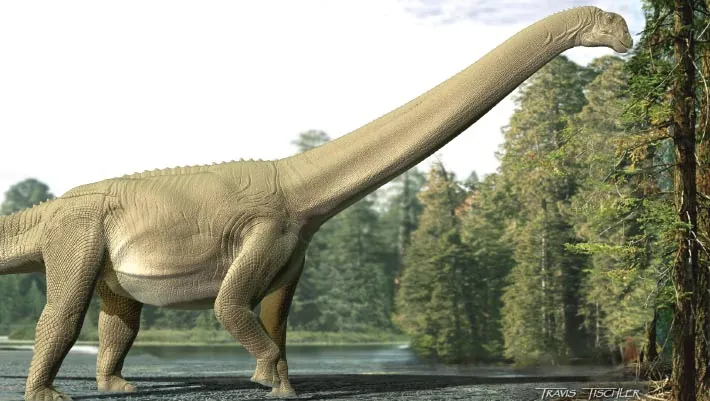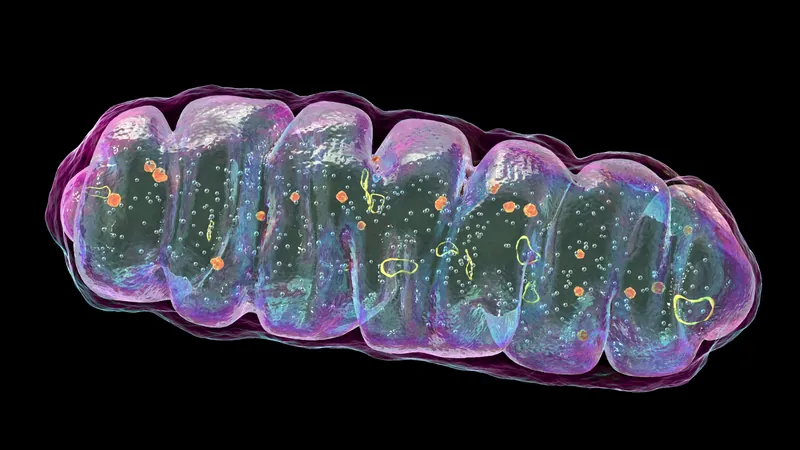
Fossil Discovery Unveils Secrets of Sauropod Dinosaurs' Diet
2025-06-09
Author: John Tan
Unlocking the Secrets of the Past
In an incredible breakthrough, paleontologists have uncovered fossilized gut contents of the sauropod dinosaur, Diamantinasaurus matildae, which roamed the earth an astonishing 94 million years ago during the mid-Cretaceous period. The findings, derived from a specimen hailing from the Winton Formation in Queensland, Australia, reveal that these colossal creatures primarily feasted on an array of plant life including conifers, seed ferns, and flowering plants, relying heavily on their gut microbes for digestion.
Why This Discovery Matters
Understanding the diets of dinosaurs is crucial for piecing together their paleobiology and ecological roles during the Mesozoic era. Despite the identification of many non-avian dinosaurs as herbivorous based on anatomical features, substantial fossil evidence has been sparse. Up to now, of the thousands of herbivorous dinosaur specimens cataloged worldwide, only three have been confirmed to preserve gut contents, all belonging to armored thyreophoran dinosaurs fossilized in marine settings.
The Historic Find
Dr. Stephen Poropat, deputy director at the Western Australian Organic and Isotope Geochemistry Centre, emphasized the historical context: "We have recognized sauropods as herbivores for over a century, but the specific details of their diets remained shrouded in mystery until this study." The analyzed specimen, affectionately named Judy, was excavated by dedicated staff and citizen scientists back in 2017.
A Diverse Diet Discovered!
The treasure trove found in Judy's stomach included pinnules and bracts from towering conifer trees along with leaves and fruits from smaller seed ferns and flowering plants. Dr. Poropat noted, "This discovery indicates that sauropods were versatile grazers who dined at various heights. This adaptability may have played a key role in their long-term survival during climatic and environmental shifts throughout the Jurassic and Cretaceous periods."
Feeding Habits and Digestive Insights
The findings affirm that these massive herbivores practiced bulk feeding—a method still observable in today's herbivorous reptiles and birds. "Sauropods didn't chew their food; they swallowed it whole, letting their digestive system work its magic," Dr. Poropat added. Remarkably, meals could linger in their digestive tracts for up to two weeks before being excreted.
A Glimpse Into Evolutionary Impact
This remarkable discovery sheds light on the dietary habits of a 12-meter-long subadult sauropod and paves the way for further inquiries into how their feeding patterns evolved as these magnificent creatures matured. As Professor Kliti Grice, Founding Director at Curtin University, remarked, "For the first time, we are detecting specific biomarkers and molecules in the gut contents of a sauropod, providing unprecedented molecular evidence of their plant-based diet.”
Research Implications Ahead
The groundbreaking paper detailing these findings was published in the esteemed journal Current Biology. The research not only enhances our understanding of how sauropods interacted with their environment but also invites additional studies to explore whether their diets evolved throughout their lives. This dive into the dietary habits of dinosaurs reveals much about their ecological significance for over 130 million years on our planet.
As scientists continue to uncover these ancient mysteries, the future of paleontology looks brighter than ever!



 Brasil (PT)
Brasil (PT)
 Canada (EN)
Canada (EN)
 Chile (ES)
Chile (ES)
 Česko (CS)
Česko (CS)
 대한민국 (KO)
대한민국 (KO)
 España (ES)
España (ES)
 France (FR)
France (FR)
 Hong Kong (EN)
Hong Kong (EN)
 Italia (IT)
Italia (IT)
 日本 (JA)
日本 (JA)
 Magyarország (HU)
Magyarország (HU)
 Norge (NO)
Norge (NO)
 Polska (PL)
Polska (PL)
 Schweiz (DE)
Schweiz (DE)
 Singapore (EN)
Singapore (EN)
 Sverige (SV)
Sverige (SV)
 Suomi (FI)
Suomi (FI)
 Türkiye (TR)
Türkiye (TR)
 الإمارات العربية المتحدة (AR)
الإمارات العربية المتحدة (AR)